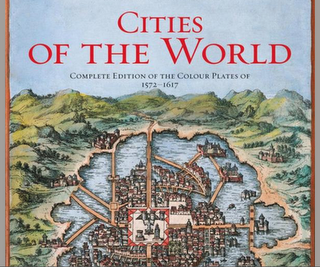Cities of the World

The Space Design Journal, in "Taschen's Gorgeous "New" Planning Book," calls our attention to an incredible picture book, with "564 plans, bird's-eye views, and map views of all major cities in Europe, plus important cities in Asia, Africa, and Latin America," dating from 1572-1617.
It illustrates a point that I make often, that while every place is unique, the systems of urban design work similarly from place to place. This is why places can be compared, and lessons learned, despite the "fact" that every place is "unique." When "uniqueness" is used as an excuse to not be able to compare "different" places it is merely an excuse for mediocrity.
I was also thinking about "battles" over the years, when proponents of various projects would argue that exceptions from basic urban design principles were in order, for whatever reasons.
Thus far, in heavy involvement in planning issues for about 9 years, I can't think of one instance that justifies deviating from basic principles of urban design.
For a good rundown of those basic principles, see the Urban Design Compendium.
Labels: cartography, urban design/placemaking, urban history



0 Comments:
Post a Comment
<< Home